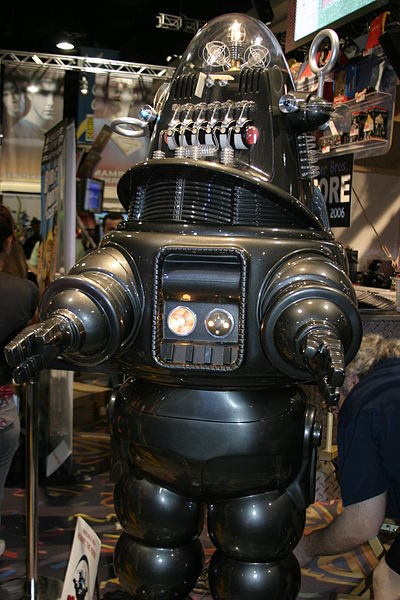 Technology is altering the lives of us all. Often it is a positive influence, offering its users tremendous benefits from time-saving to life-extension. However, the relationship of technology to our employment is more complex and usually detrimental.
Technology is altering the lives of us all. Often it is a positive influence, offering its users tremendous benefits from time-saving to life-extension. However, the relationship of technology to our employment is more complex and usually detrimental.
Many traditional forms of employment have already disappeared thanks to our technological tools; still many other jobs have changed beyond recognition, requiring new skills and knowledge. And this may be just the beginning.
From Technology Review:
Given his calm and reasoned academic demeanor, it is easy to miss just how provocative Erik Brynjolfsson’s contention really is. Brynjolfsson, a professor at the MIT Sloan School of Management, and his collaborator and coauthor Andrew McAfee have been arguing for the last year and a half that impressive advances in computer technology—from improved industrial robotics to automated translation services—are largely behind the sluggish employment growth of the last 10 to 15 years. Even more ominous for workers, the MIT academics foresee dismal prospects for many types of jobs as these powerful new technologies are increasingly adopted not only in manufacturing, clerical, and retail work but in professions such as law, financial services, education, and medicine.
That robots, automation, and software can replace people might seem obvious to anyone who’s worked in automotive manufacturing or as a travel agent. But Brynjolfsson and McAfee’s claim is more troubling and controversial. They believe that rapid technological change has been destroying jobs faster than it is creating them, contributing to the stagnation of median income and the growth of inequality in the United States. And, they suspect, something similar is happening in other technologically advanced countries.
Perhaps the most damning piece of evidence, according to Brynjolfsson, is a chart that only an economist could love. In economics, productivity—the amount of economic value created for a given unit of input, such as an hour of labor—is a crucial indicator of growth and wealth creation. It is a measure of progress. On the chart Brynjolfsson likes to show, separate lines represent productivity and total employment in the United States. For years after World War II, the two lines closely tracked each other, with increases in jobs corresponding to increases in productivity. The pattern is clear: as businesses generated more value from their workers, the country as a whole became richer, which fueled more economic activity and created even more jobs. Then, beginning in 2000, the lines diverge; productivity continues to rise robustly, but employment suddenly wilts. By 2011, a significant gap appears between the two lines, showing economic growth with no parallel increase in job creation. Brynjolfsson and McAfee call it the “great decoupling.” And Brynjolfsson says he is confident that technology is behind both the healthy growth in productivity and the weak growth in jobs.
It’s a startling assertion because it threatens the faith that many economists place in technological progress. Brynjolfsson and McAfee still believe that technology boosts productivity and makes societies wealthier, but they think that it can also have a dark side: technological progress is eliminating the need for many types of jobs and leaving the typical worker worse off than before. Brynjolfsson can point to a second chart indicating that median income is failing to rise even as the gross domestic product soars. “It’s the great paradox of our era,” he says. “Productivity is at record levels, innovation has never been faster, and yet at the same time, we have a falling median income and we have fewer jobs. People are falling behind because technology is advancing so fast and our skills and organizations aren’t keeping up.”
Brynjolfsson and McAfee are not Luddites. Indeed, they are sometimes accused of being too optimistic about the extent and speed of recent digital advances. Brynjolfsson says they began writing Race Against the Machine, the 2011 book in which they laid out much of their argument, because they wanted to explain the economic benefits of these new technologies (Brynjolfsson spent much of the 1990s sniffing out evidence that information technology was boosting rates of productivity). But it became clear to them that the same technologies making many jobs safer, easier, and more productive were also reducing the demand for many types of human workers.
Anecdotal evidence that digital technologies threaten jobs is, of course, everywhere. Robots and advanced automation have been common in many types of manufacturing for decades. In the United States and China, the world’s manufacturing powerhouses, fewer people work in manufacturing today than in 1997, thanks at least in part to automation. Modern automotive plants, many of which were transformed by industrial robotics in the 1980s, routinely use machines that autonomously weld and paint body parts—tasks that were once handled by humans. Most recently, industrial robots like Rethink Robotics’ Baxter (see “The Blue-Collar Robot,” May/June 2013), more flexible and far cheaper than their predecessors, have been introduced to perform simple jobs for small manufacturers in a variety of sectors. The website of a Silicon Valley startup called Industrial Perception features a video of the robot it has designed for use in warehouses picking up and throwing boxes like a bored elephant. And such sensations as Google’s driverless car suggest what automation might be able to accomplish someday soon.
A less dramatic change, but one with a potentially far larger impact on employment, is taking place in clerical work and professional services. Technologies like the Web, artificial intelligence, big data, and improved analytics—all made possible by the ever increasing availability of cheap computing power and storage capacity—are automating many routine tasks. Countless traditional white-collar jobs, such as many in the post office and in customer service, have disappeared. W. Brian Arthur, a visiting researcher at the Xerox Palo Alto Research Center’s intelligence systems lab and a former economics professor at Stanford University, calls it the “autonomous economy.” It’s far more subtle than the idea of robots and automation doing human jobs, he says: it involves “digital processes talking to other digital processes and creating new processes,” enabling us to do many things with fewer people and making yet other human jobs obsolete.
It is this onslaught of digital processes, says Arthur, that primarily explains how productivity has grown without a significant increase in human labor. And, he says, “digital versions of human intelligence” are increasingly replacing even those jobs once thought to require people. “It will change every profession in ways we have barely seen yet,” he warns.
Read the entire article here.
Image: Industrial robots. Courtesy of Techjournal.






 Technology is altering the lives of us all. Often it is a positive influence, offering its users tremendous benefits from time-saving to life-extension. However, the relationship of technology to our employment is more complex and usually detrimental.
Technology is altering the lives of us all. Often it is a positive influence, offering its users tremendous benefits from time-saving to life-extension. However, the relationship of technology to our employment is more complex and usually detrimental. History will probably show that humans are the likely cause for the mass disappearance and death of honey bees around the world.
History will probably show that humans are the likely cause for the mass disappearance and death of honey bees around the world. Fans of science fiction and Isaac Asimov in particular may recall his three laws of robotics:
Fans of science fiction and Isaac Asimov in particular may recall his three laws of robotics: